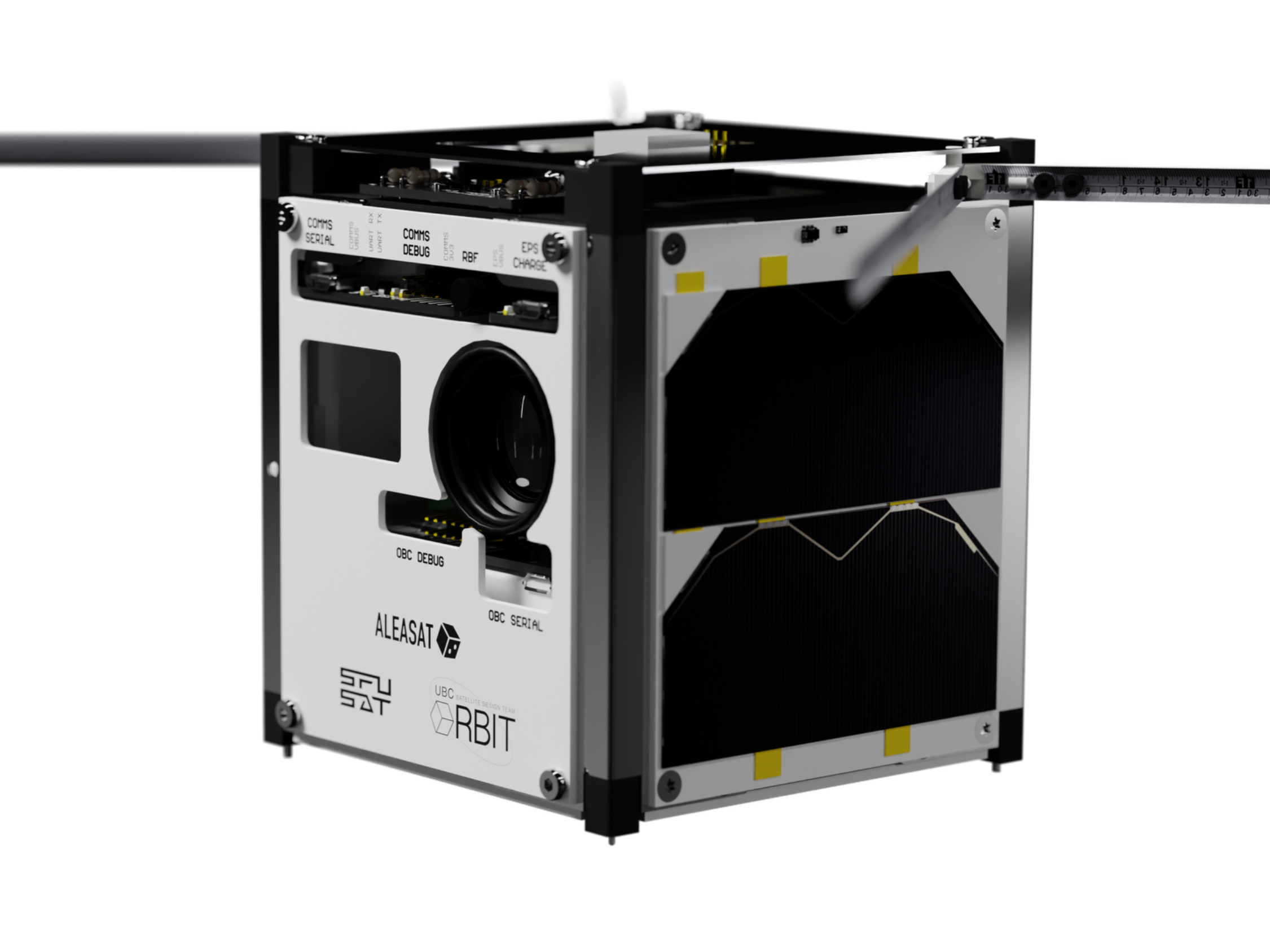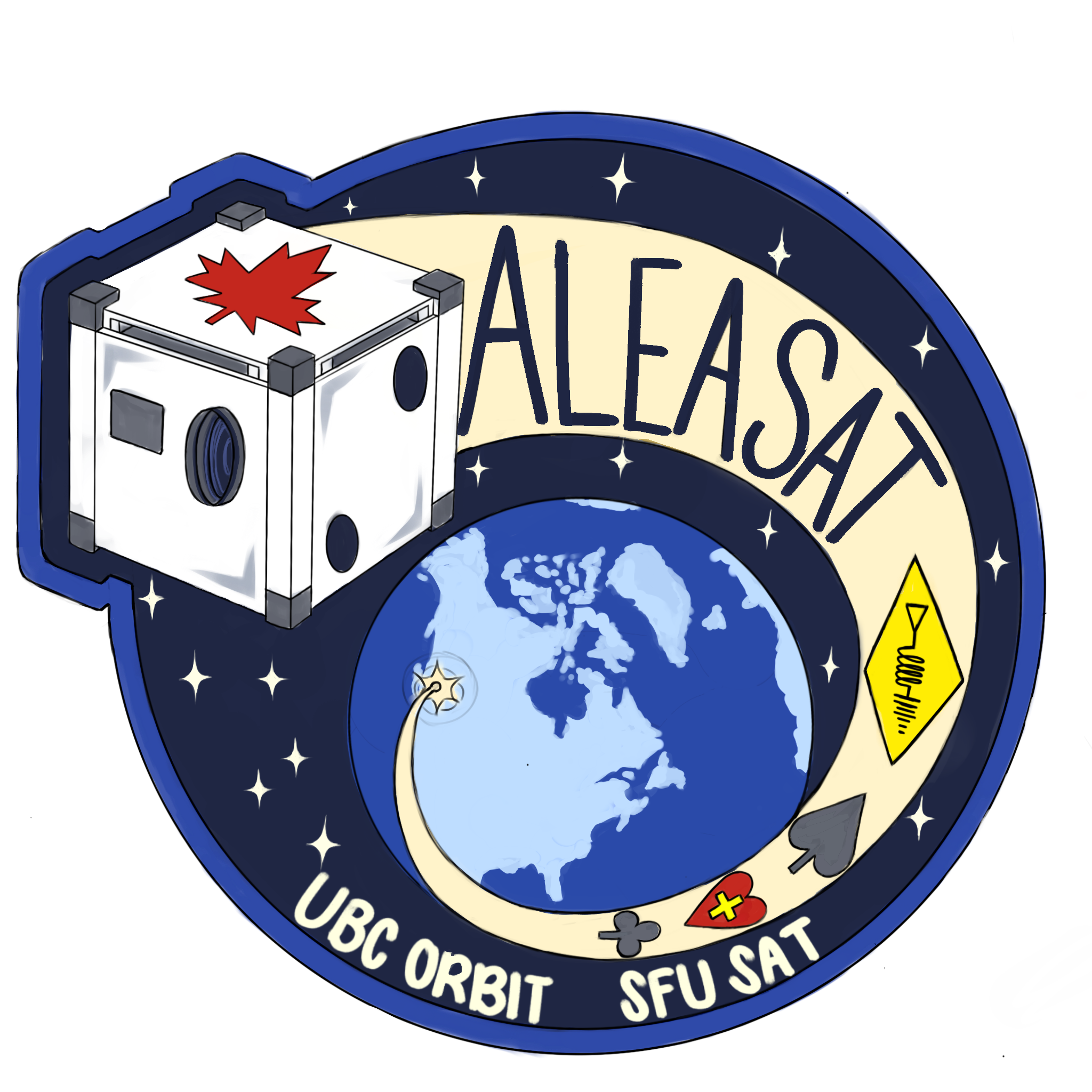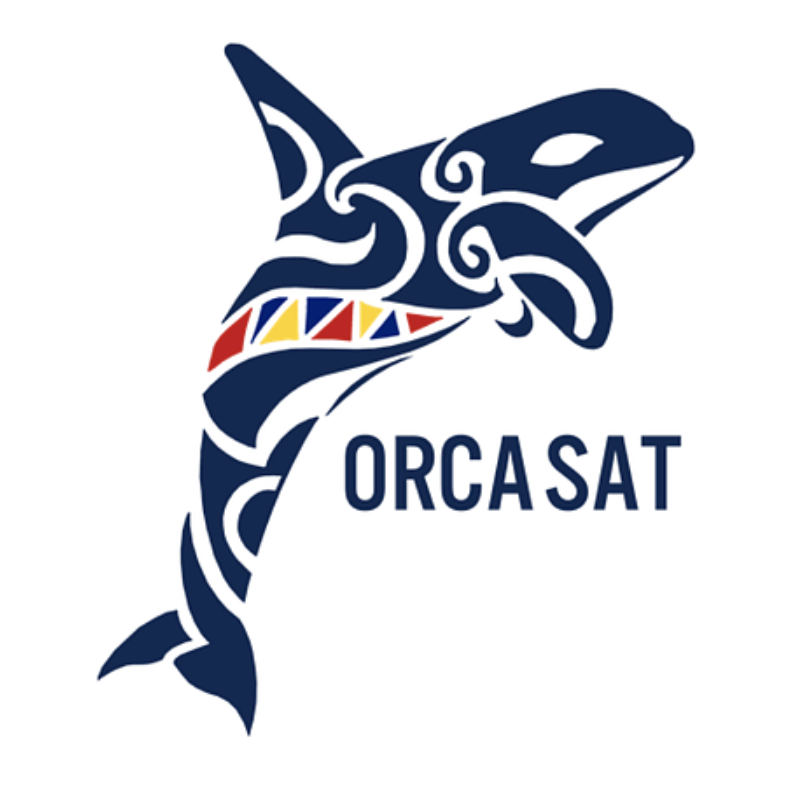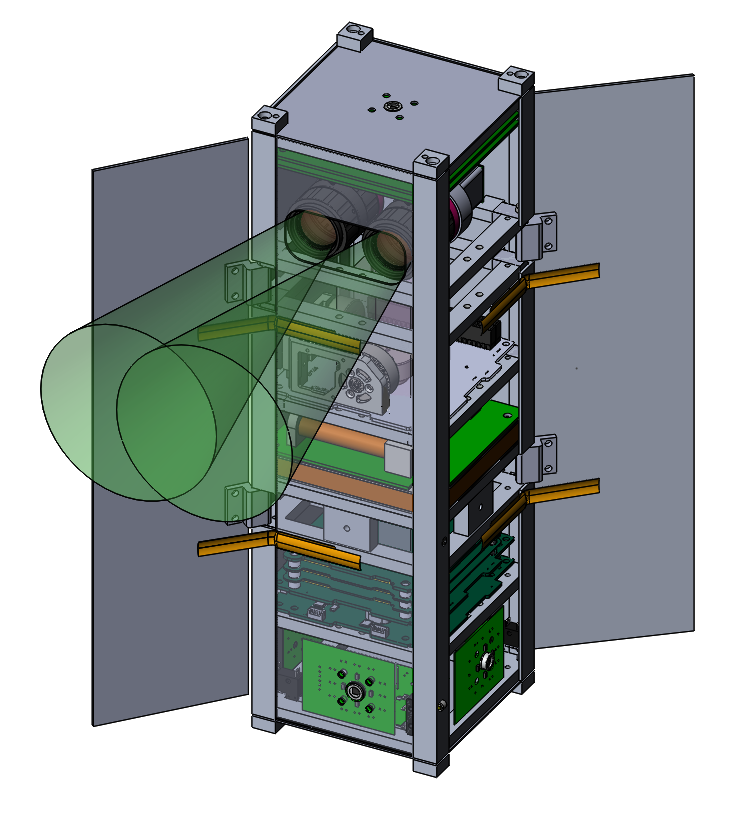
UBC Orbit develops new technologies and designs constantly. Our efforts are currently concentrated on two main projects. Keep checking this page and follow us on social media for updates as they occur!


ALEASAT is an Earth-observation satellite that can be used by radio amateurs to assist in disaster relief operations. Equipped with an on-board camera, ALEASAT will allow radio amateurs to request imagery of a specific location on Earth, and then downlink that imagery directly from the satellite.
Unlike most amateur satellites, ALEASAT's targeted approach has direct applications to disaster monitoring and relief activities. This project can serve as a precursor to a future amateur satellite constellation dedicated to disaster monitoring. In addition to ALEASAT itself, the team is also building the necessary ground station infrastructure to communicate with the satellite.
With support from UBC, the Radio Amateurs of Canada, and the European Space Agency's Fly Your Satellite! Programme, we are in the process of building and testing our satellite with an aim to launch it in a few years.

ORCASat - The Optical and Radio Calibration Satellite - is a collaborative effort between teams at the University of British Columbia, Simon Fraser University, the University of Victoria, and Instituto Superior Técnico in Lisbon, Portugal.
ORCASat will be used to calibrate ground-based star photometers and observatories for atmospheric and instrumental attenuation. Learn more here.
Aspectu (Latin for sight) provides a satellite imagery service that captures images of Earth on an on-demand basis, with a spectral resolution of 53 meters, and downlinks the images to amateur radio operators worldwide.

Trillium is a low-cost alternative to radiation-hardened microcontrollers (MCUs) for space computation through the use of triple redundant MCUs.
Trillium is used as the Command and Data Handling subsystem in Aspectu, providing automatic on-board satellite operation and command-driven operations when requested by the ground.

The Thunderbird Satellite's primary payload consists of two cameras intended for high-resolution imaging of Earth. The photos are evaluated for potential forest fire risks using on-board machine learning modules, trained on the ground, with the capability to update these modules over the course of the mission.
The use of two cameras enables multiple filters to be applied to the image sensor, allowing for infrared and visible light imaging.